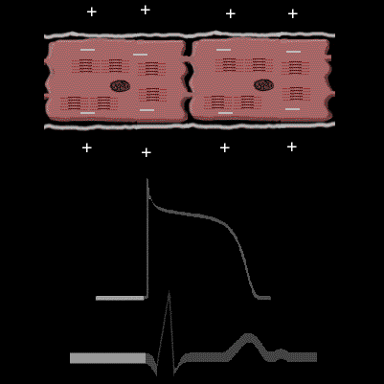
We know that when the heart is in its resting state, the inside of each individual cell is negative relative to the outside. This is referred to as the "resting membrane potential" (RMP) and is responsible for the resting phase (phase 4) of the action potential. In the normal heart there are no voltage gradients or electrical boundaries between the ventricular myocardial cells. No current flows between the cells, and there is no deflection on the body surface electrocardiogram, only a straight line.
